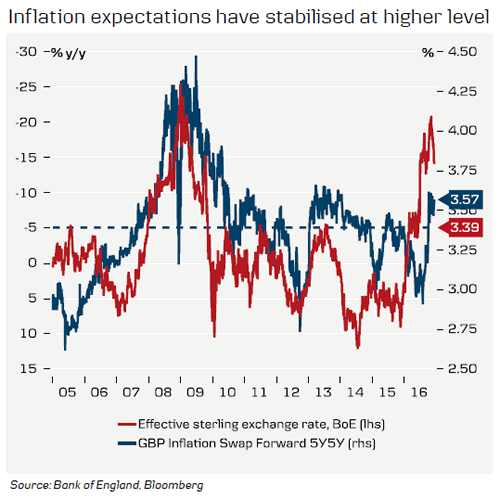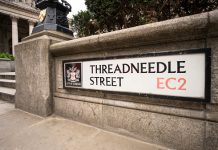BoE removes neutral stance
Against expectations, the Bank of England (BoE) made another hawkish surprise, as three members voted for an immediate hike and it removed its neutral stance by no longer saying that it can ‘move in either direction’. There are two reasons for this despite slower growth: 1) inflation has moved higher than the BoE projected in May and 2) the unemployment rate has moved lower than the BoE projected in May. Note that Kristin Forbes (hawk) is leaving the BoE on 30 June, which leaves Ian McCaffertyand Michael Saunders as the two remaining hawks.
Markets were caught by surprise so UK yields moved higher and GBP strengthened due to the overall more hawkish message. Both we and markets had expected a more soft tone, as Q1 GDP growth was revised down to 0.2% from 0.3% (and not up to 0.4% as the BoE had expected) and economic indicators for Q2 have remained weak (although better in Q1).
Market pricing seems fair at the moment with the first full BoE hike priced around mid-2019 after the Brexit negotiations under Article 50 are concluded.
Despite the overall more hawkish message, we do not expect a BoE rate hike before sometime in 2019. UK growth is slowing, high inflation is temporary due to the weak GBP caused by Brexit, wage growth is weak and does not indicate high underlying inflationary pressure and political uncertainty is high. Also we do not think one should over-interpret the removal of the ‘move in either direction’, as the likelihood of further easing was slim already. While we have a hawkish wing in the Monetary Policy Committee, the core of the committee (including BoE governor Carney) is still dovish.
We still forecast EUR/GBP in the range of 0.84-0.90 near term. In our view, we now have a ‘government risk premium’ on top of the ‘Brexit uncertainty premium’. We expect GBP will remain sensitive to news on Brexit. See also Research UK: Hung parliament adds government risk premium to GBP, 9 June.
BoE pricing seems fair, in our view
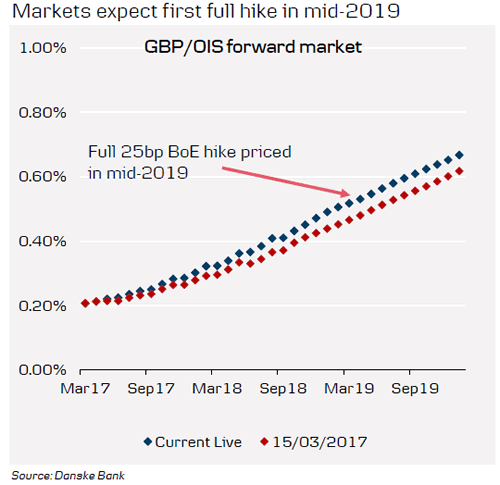
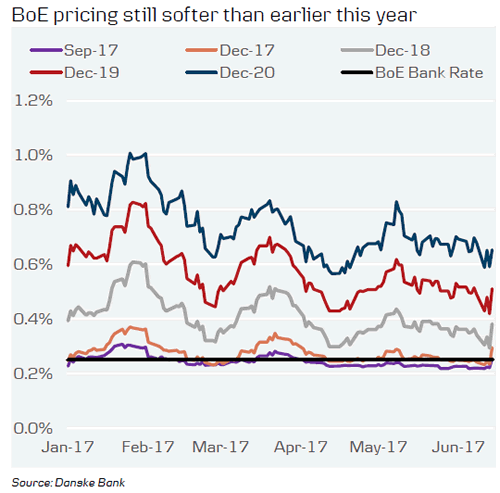
Economic data versus BoE’s May projections
Actual inflation higher than expected in May
The BoE lowered its inflation projection in May but actual CPI inflation has been higher than expected. This (in combination with the low unemployment rate) is the main reason why three members voted for a hike.
BoE now says ‘inflation could rise above 3% by the autumn, and is likely to remain above the target for an extended period as sterling’s depreciation continues to feed through into the prices of consumer goods and services’.
Also the 2.5% fall in GBP since the May Inflation Report ‘will add to that imported inf lationary impetus’.
We still think the core BoE members will see through higher inflation, as it is only temporary due to currency changes. A trigger for a more hawkish BoE will be higher domestically generated inflation (especially higher wage growth).
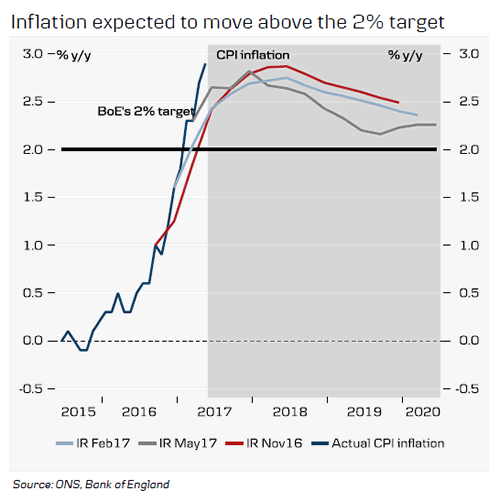
Q1 GDP growth was revised down, not up as BoE expected
UK Q1 GDP growth was revised down to 0.2% q/q from 0.3% against the BoE’s own expectation of an upward revision to 0.4% q/q.
BoE says surveys point to a ‘modest recovery in GDP growth in the second quarter’. In May, the BoE said it expects the economy to grow around 0.4% q/q in coming quarters.
The BoE says slower private consumption of goods is offset by a pickup in exports and business investments.
We think the BoE seems a bit too optimistic on the UK growth outlook near-term.
BoE says it ‘cannot prevent either the necessary real adjustment as the United Kingdom moves towards its new international trading arrangements or the weaker real income growth that is likely to accompany that adjustment over the next few years’.
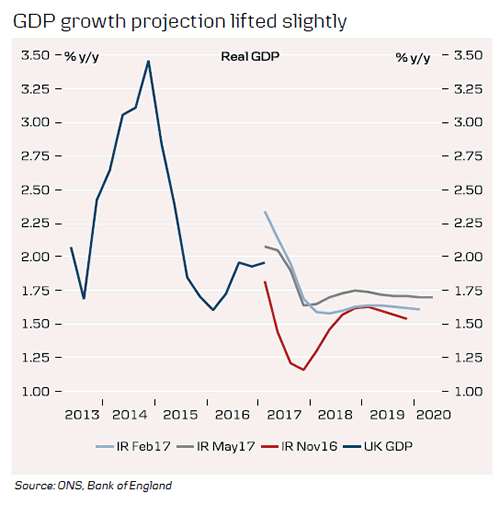
Unemployment rate lower than projected in May
The actual unemployment rate has fallen to 4.6%, which is lower than the projections from May (which was revised down from the projections in February).
The BoE estimates the NAIRU at 4.5%, so sees only a ‘small degree of spare capacity’ left in the economy, especially as ‘the continued growth of employment could suggest that spare capacity is being eroded’.
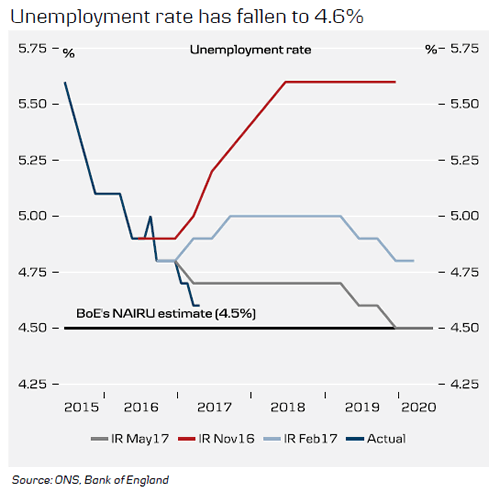
Macro charts
GDP growth slowed markedly in Q1
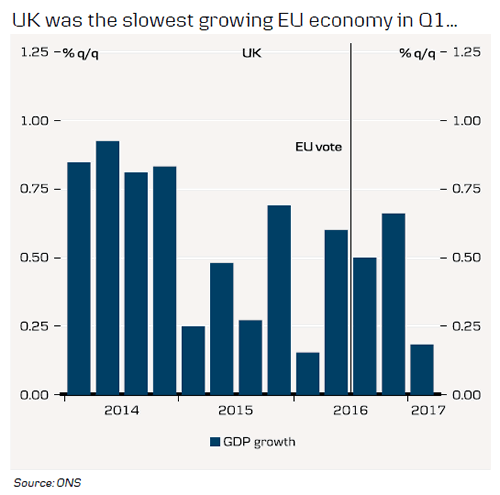

PMIs suggest growth has been slightly higher in Q2

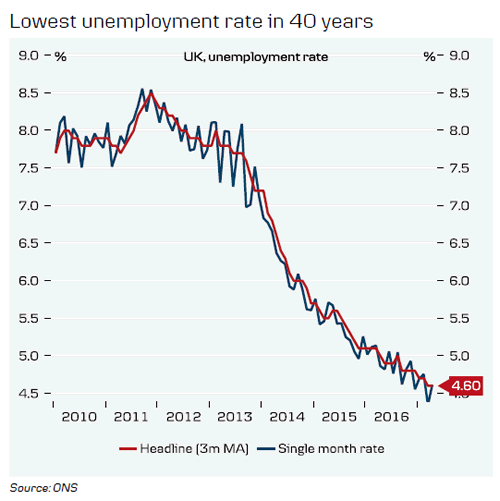
Weaker GBP => higher import prices => higher inflation => eroding purchasing power
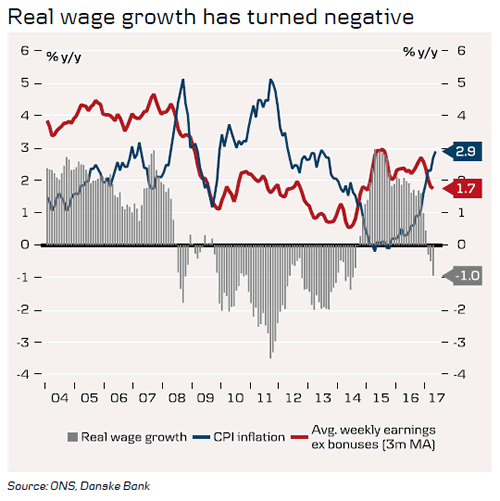
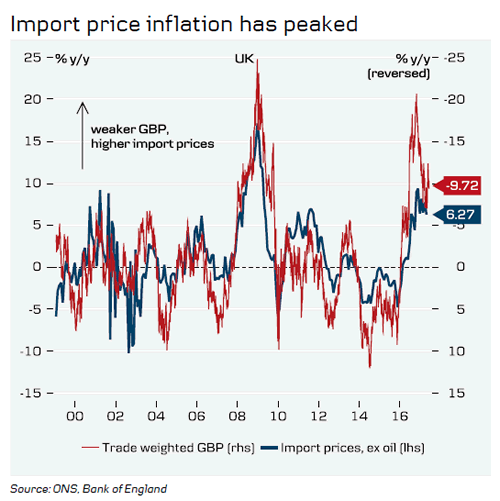
Commodity prices have also pushed up inflation
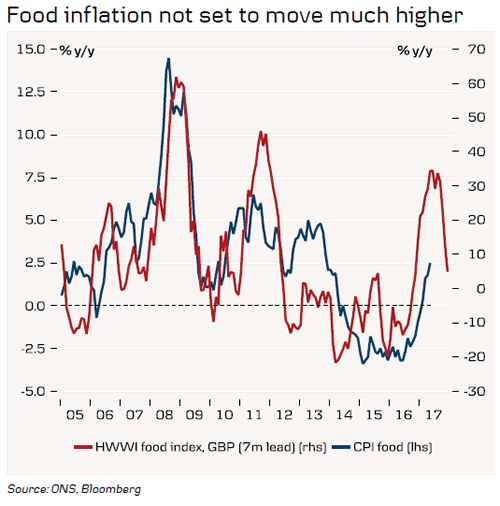
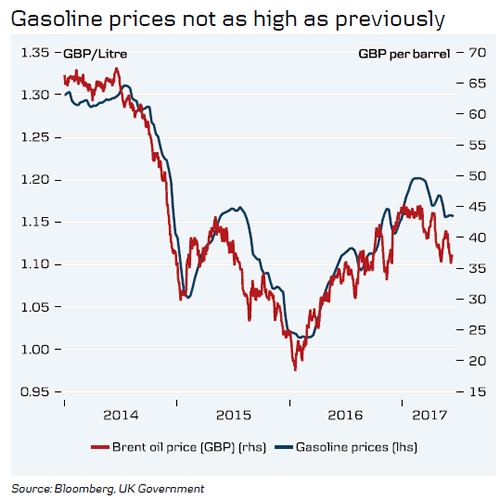
Inflation expectations have stabilised at higher level
